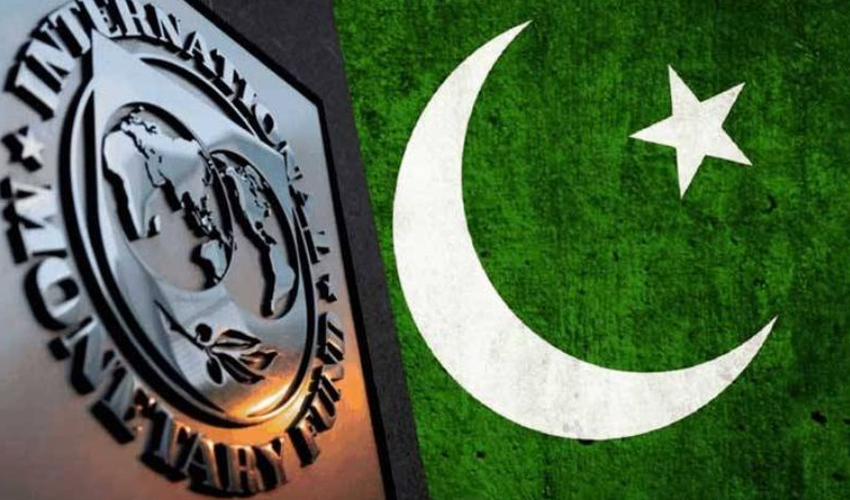Islamabad, Oct 1; Why IMF has intervened in the agri sector. Recently, the International Monetary Fund (IMF) imposed a new requirement under the $7 billion Extended Fund Facility, mandating that Pakistan’s federal and provincial governments eliminate the crop minimum support price (MSP) system by June 2026.
Currently, the MSP applies to only three crops: wheat, sugarcane, and cotton, whereas in India, it covers 23 crops.
The MSP, commonly employed in many developing countries, serves two primary functions: it ensures farmers receive a minimum income for their produce and stabilizes the production and supply of essential crops.
The first function aims to protect farmers from global price swings and distress sales during times of surplus, while the second function helps prevent supply-demand imbalances and market inefficiencies that affect consumers.
However, these advantages come with challenges; effective implementation requires strong institutional support, adequate crop storage systems, and substantial financial resources.
Wheat, the largest crop in Pakistan cultivated over 9.6 million hectares, will be most impacted by the IMF’s stipulation.
While the MSP system for wheat isn’t fundamentally flawed and has generally stabilized the market, the real issue is its implementation, which suffers from significant inefficiencies, widespread corruption, and heavy reliance on costly loans from commercial banks to finance wheat procurement and storage.
The IMF is urging Pakistan to discontinue support price interventions as they increasingly burden public finances.
For instance, in previous years (except 2024), the Punjab government procured about 3.5 to 4.5 million tonnes of wheat annually, representing roughly 16-20% of the province’s total production, to maintain strategic reserves and stabilize flour prices.
The government sold the procured wheat through flour mills at prices equal to or above the MSP.
The main concern is the extraordinarily high incidental costs (including storage, freight, and interest on loans) and operational costs (like salaries), which, along with waste and theft, inflate the overall expense to the government by 20-25% beyond the MSP.
Over the years, the government has borrowed substantial amounts but has only been able to make partial repayments. Consequently, the outstanding debt grew to Rs680 billion in June 2023, with annual interest payments reaching Rs87 billion in 2022-23 and Rs110 billion in 2023-24.
The situation in other provinces is similar. This transformation has made what could be a beneficial system a liability for public finances, which is why the IMF advocates for ending such interventions.
While the wheat MSP set by the federal and provincial governments is often seen as a subsidy for farmers, this interpretation is somewhat misleading.
An analysis of MSPs compared to global wheat prices over ten harvests (2014-2023) indicates that in 2015, 2016, 2017, 2018, and 2019, farmers benefited from higher MSPs, largely due to the PML-N government’s unsustainable policy of capping the dollar exchange rate at around Rs100, which made food imports cheaper.
In contrast, during 2014, 2020, 2021, 2022, and 2023, farmers received less than global market prices, and the government even resorted to forcibly purchasing wheat directly from farmers to meet procurement targets. Overall, farmers have seen minimal benefits from the wheat MSP system.
For cotton, the federal government intervenes by occasionally setting an intervention price. In 2023, it established a price of Rs8,500 per 40kg for cotton (phutti) to revive production.
Unfortunately, when market prices fell below this level, the government did not provide support, resulting in many farmers, particularly those encouraged to grow cotton, selling their crop for Rs6,000-6,500 per 40kg.
The situation for sugarcane is different, as provincial governments set a minimum purchase price each year in consultation with farmers and sugar mills, but without financial obligations.
Concerns exist that governments establish higher sugarcane prices to benefit farmers, leading to increased sugar production costs.
However, recent data does not support this view. For the 2023-24 crushing season, the Indian government set the sugarcane price at INR 315 per quintal (approximately Pak Rs421 per 40kg), while in Pakistan, it was set at Pak Rs425 per 40kg—nearly identical. However, the cost of sugarcane production in Pakistan is significantly higher than in India.
The most pressing issue is to anticipate the effects of phasing out MSPs and take proactive steps to mitigate potential negative consequences.
Transitioning to an MSP-free regime could adversely impact the overall productivity of Pakistan’s agricultural sector.
The Competition Commission of Pakistan is largely ineffective.
Therefore, relying solely on market forces in a distorted market could leave farmers vulnerable to cartels in the wheat, cotton, and sugar sectors.
This situation may force farmers to change crops, as seen this year with decreased maize and cotton acreage due to poor prices in 2023.
Such changes could further increase the instability index of crops—reflecting variations in acreage, yields, and prices—already elevated in Pakistan due to climate change and rising input costs.
Nevertheless, improving crop yields, which would enhance production and supply while lowering per-unit costs and prices, could significantly alleviate the negative effects of this policy shift.
Khalid Wattoo is a farmer and development professional, and Dr. Waqar Ahmad is a former Associate Professor at the University of Agriculture, Faisalabad.
